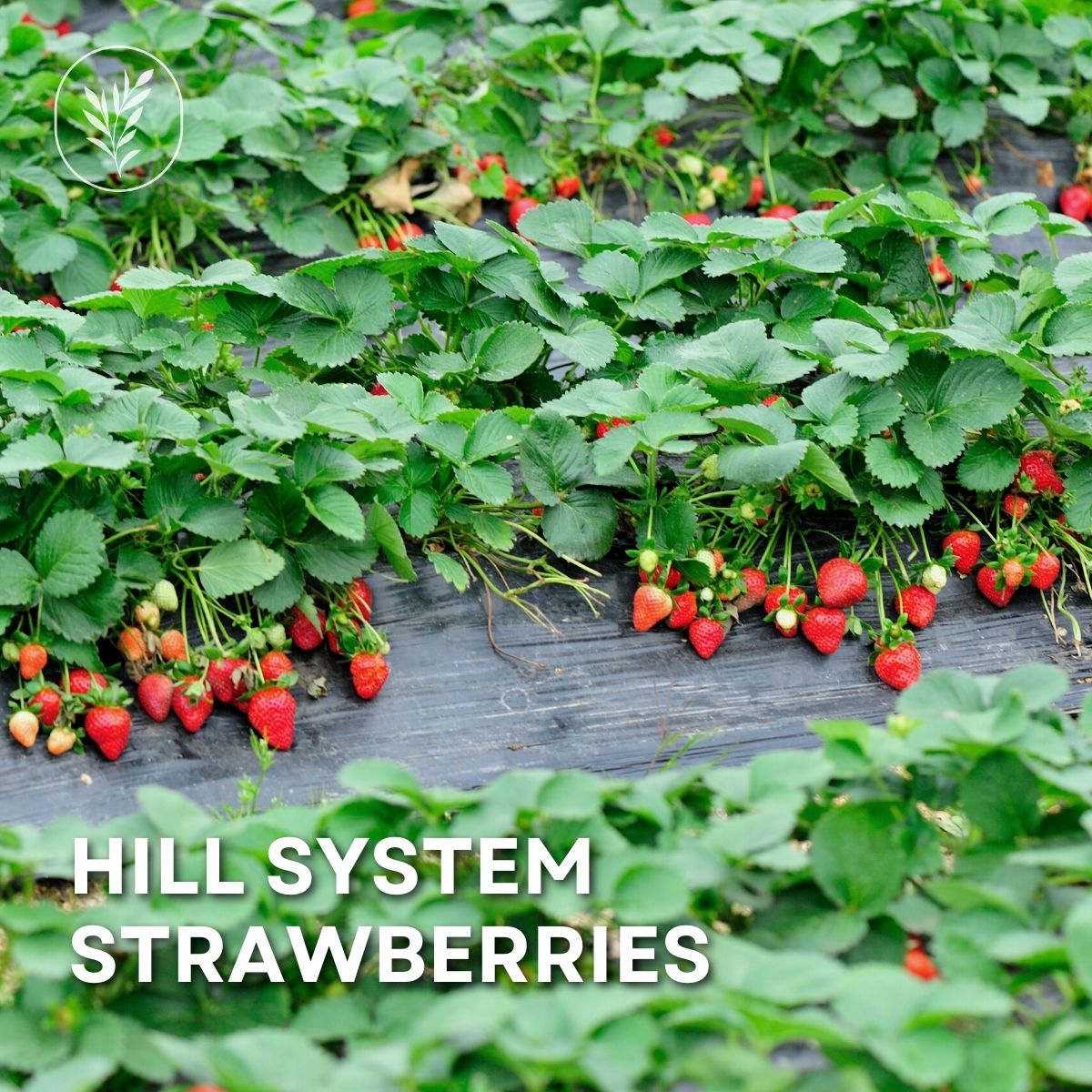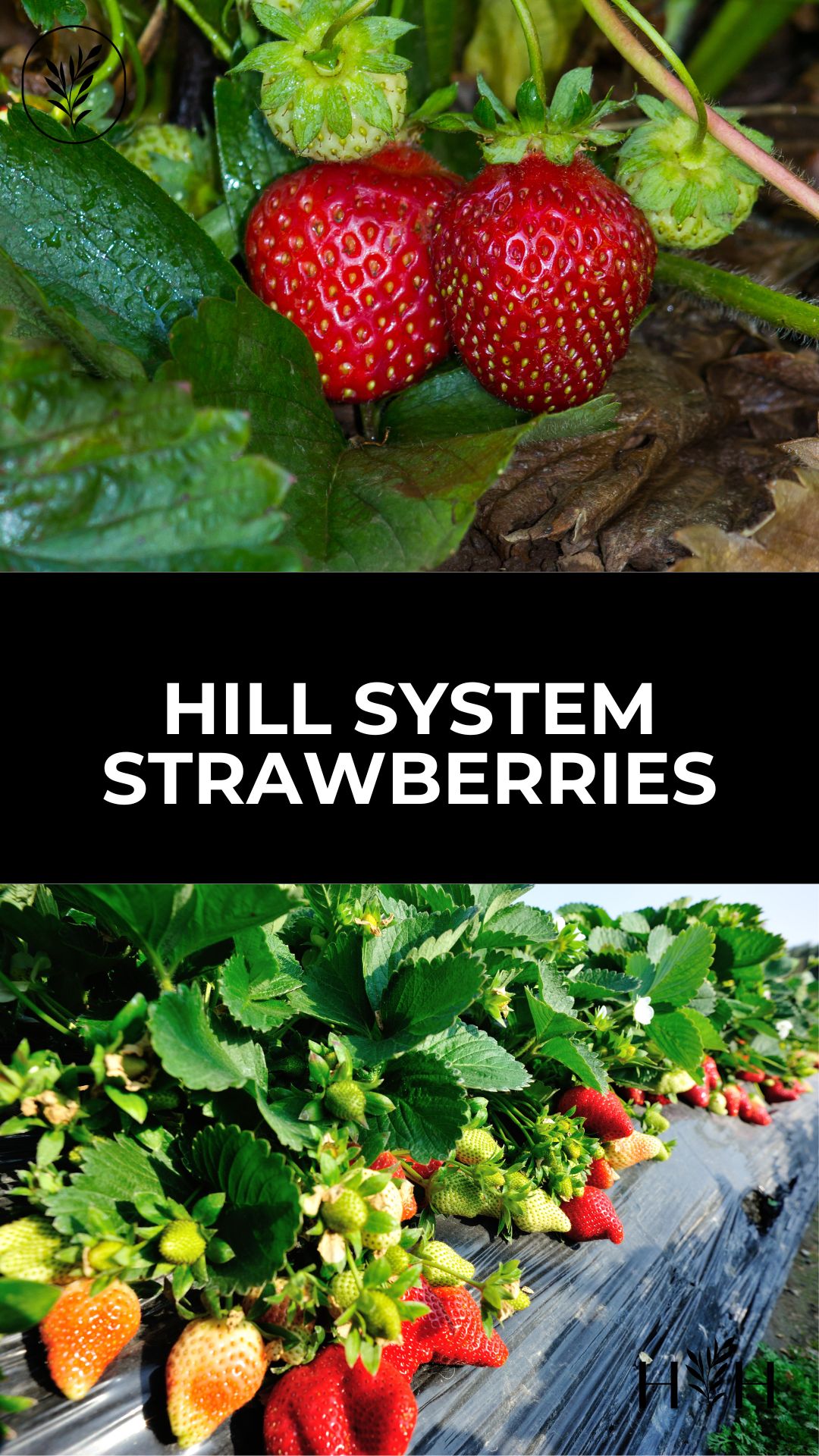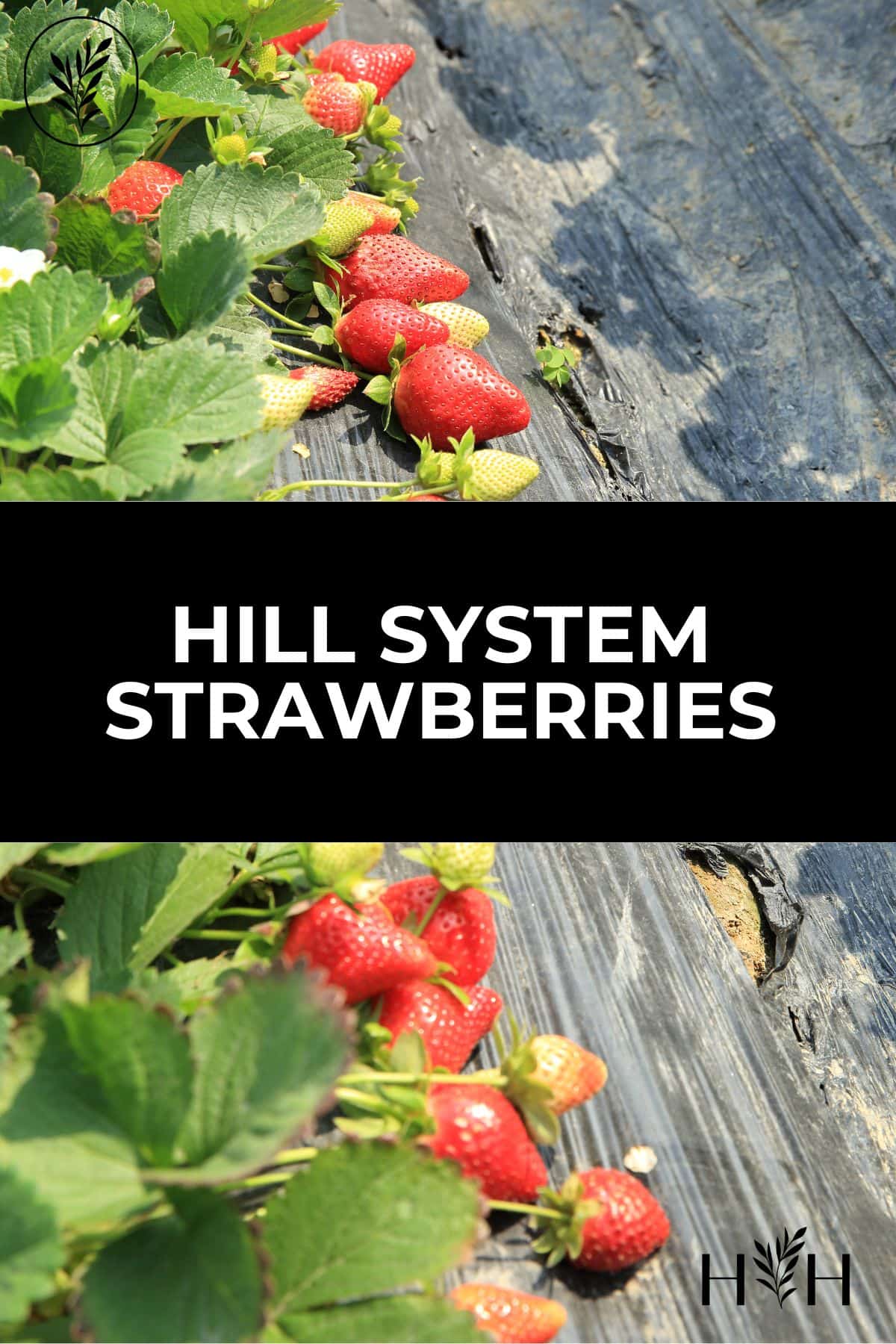The hill system configuration for planting strawberries is the standard method for everbearing and modern day-neutral cultivars. Hill-system strawberries generally produce berries the same year they are planted, making them popular for berry patches that can be harvested for months during the summertime and early fall.
Hill systems are becoming increasingly popular due to their easy maintenance and high yields – so if you want the best results from your strawberry patch, this could be the way forward. This method works best for plants that don’t grow too many runners – typically everbearing and day-neutral strawberry varieties.
In this blog post, we’ll explore everything there is to know about growing hill system strawberries, including how to plant them correctly, what care tips will ensure success, and when it’s time to harvest that delicious bounty of fruit.
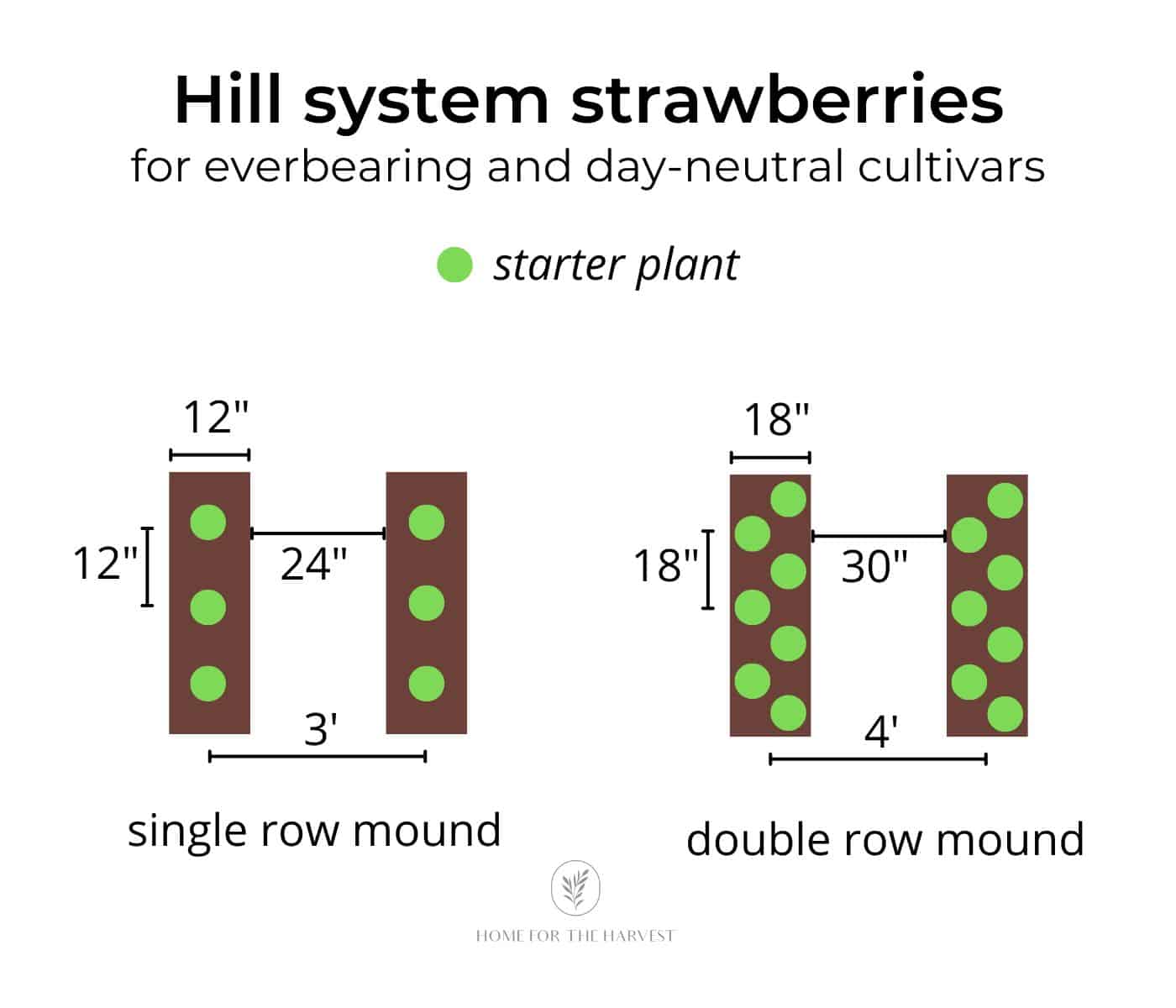
Introduction to growing strawberries with the hill system
Growing strawberries with the hill system is a great way to maximize your strawberry production when growing everbearing/day-neutral cultivars. This method of planting involves mounding up soil, planting starter plants 10 to 18 inches apart, mulching over bare soil, and removing most/all runners that appear.
The hill system configuration is most commonly used for everbearing and day-neutral cultivars. The benefits of this type of planting are many, including better root and leaf development, as well as larger fruit production. In contrast, June-bearing strawberries are typically planted in matted rows.
When it comes time to plant your strawberries, you’ll want to start by preparing the soil properly. Make sure that the area is free from weeds and other debris before tilling or spading the soil at least 8-10 inches deep. Once this is done, add some organic matter such as compost or aged manure for added nutrients and drainage capabilities.
After that’s taken care of, you can begin planting your strawberry plants. Place each one about 10-18 inches apart in rows 4 feet wide with 2-3 feet between each row for easy access when harvesting later on down the road. Hill system strawberry beds are usually mulched with black plastic to keep weeds down, but organic mulches could also be used.
Once planted, make sure that your strawberries receive adequate water throughout their growing season – usually, 1 inch per week should do just fine. Additionally, fertilize them every few weeks using an all-purpose fertilizer. Last but most importantly – keep those pesky weeds away. Weeds compete with your strawberry plants for moisture and nutrients so be sure to pull any up right away if they appear near your beds.
Harvesting strawberries grown in a hill system will depend on how long ago you planted them – generally speaking, though it takes around several months after transplanting before they’re ready for picking. When harvest time arrives, however; be gentle when plucking off ripe berries so as not to damage any unripe ones still attached nearby (you don’t want those going bad.).
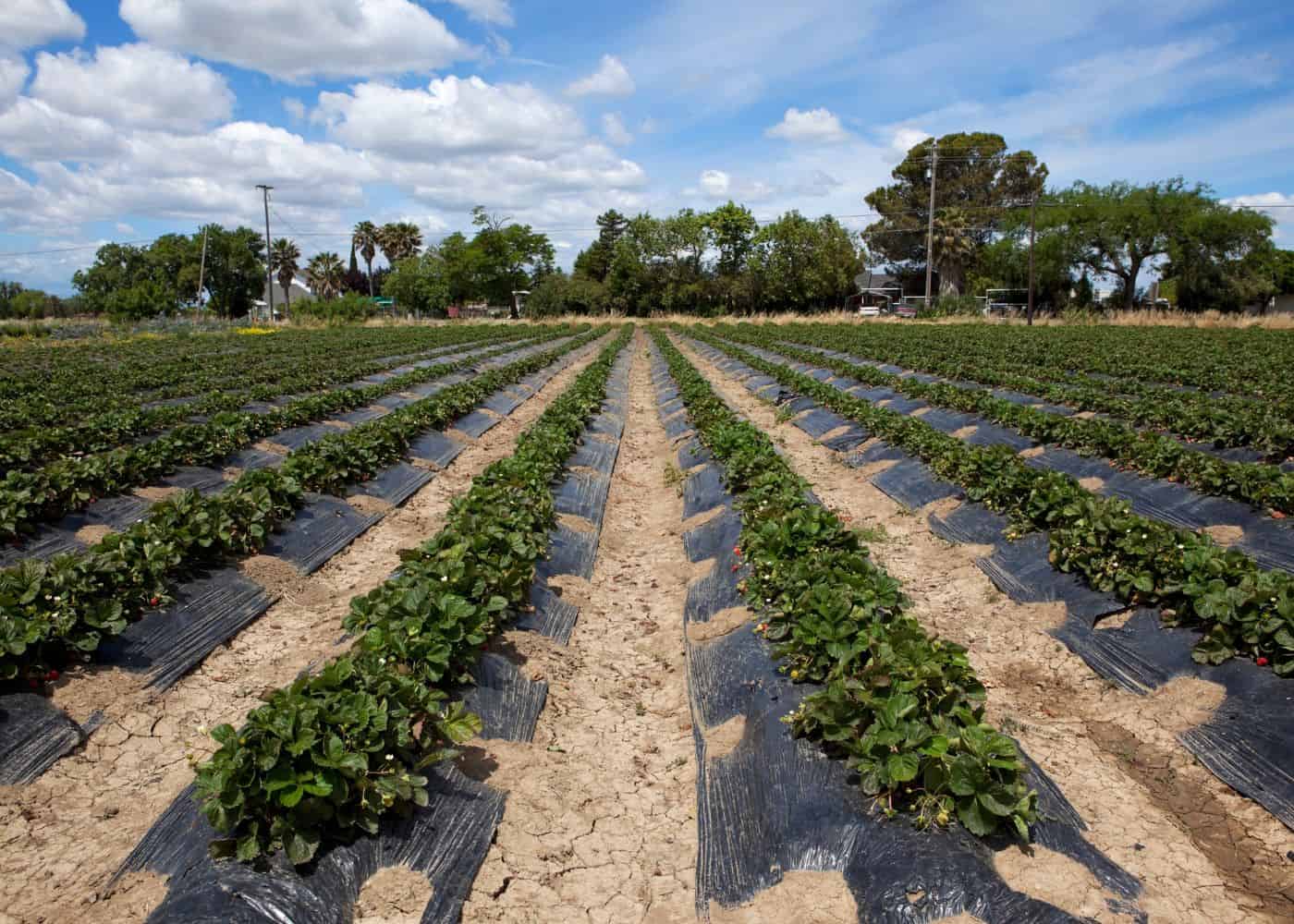
How to plant strawberries in a hill system
When planting, it’s important to space the plants 10 to 18 inches apart. If they are planted at 10 inches apart, remove all runners throughout the season. If they have planted 18 inches apart, you can handset one runner between mother plants if you like to create a double-row mound.
When planting your strawberry hills, make sure each plant has plenty of room for root growth and that there is good air circulation around them. To ensure this happens, dig holes twice as wide as your pot or container and fill them with soil amended with compost or other organic matter before adding your plant. Make sure each hole is deep enough so that when you place the plant into it, its crown (where leaves meet the stem) will be level with the ground surface after filling in the soil around it.
Varieties to plant in hill system configuration
Everbearing and day-neutral varieties are best planted using the hill system (instead of matted rows). Here are some wonderful day-neutral and everbearing cultivars to consider:
- Ozark Beauty
- Seascape
- Tristar
- Tribute
- Tillikum
- Selva
Once planted, water well and mulch heavily around the base of plants using plastic sheeting or straw to help retain moisture and keep weeds down during the growing season ahead. Additionally, remove any blossoms appearing on day-neutrals during the first few weeks after planting; this encourages strong leaf and root development rather than fruiting too early, which could weaken the overall health of a plant.
Finally, fertilize monthly starting from mid-spring through summer months using a balanced fertilizer mix applied according to package instructions for best results. This helps promote healthy foliage growth while also providing the necessary nutrients needed for optimal fruit production come harvest time.
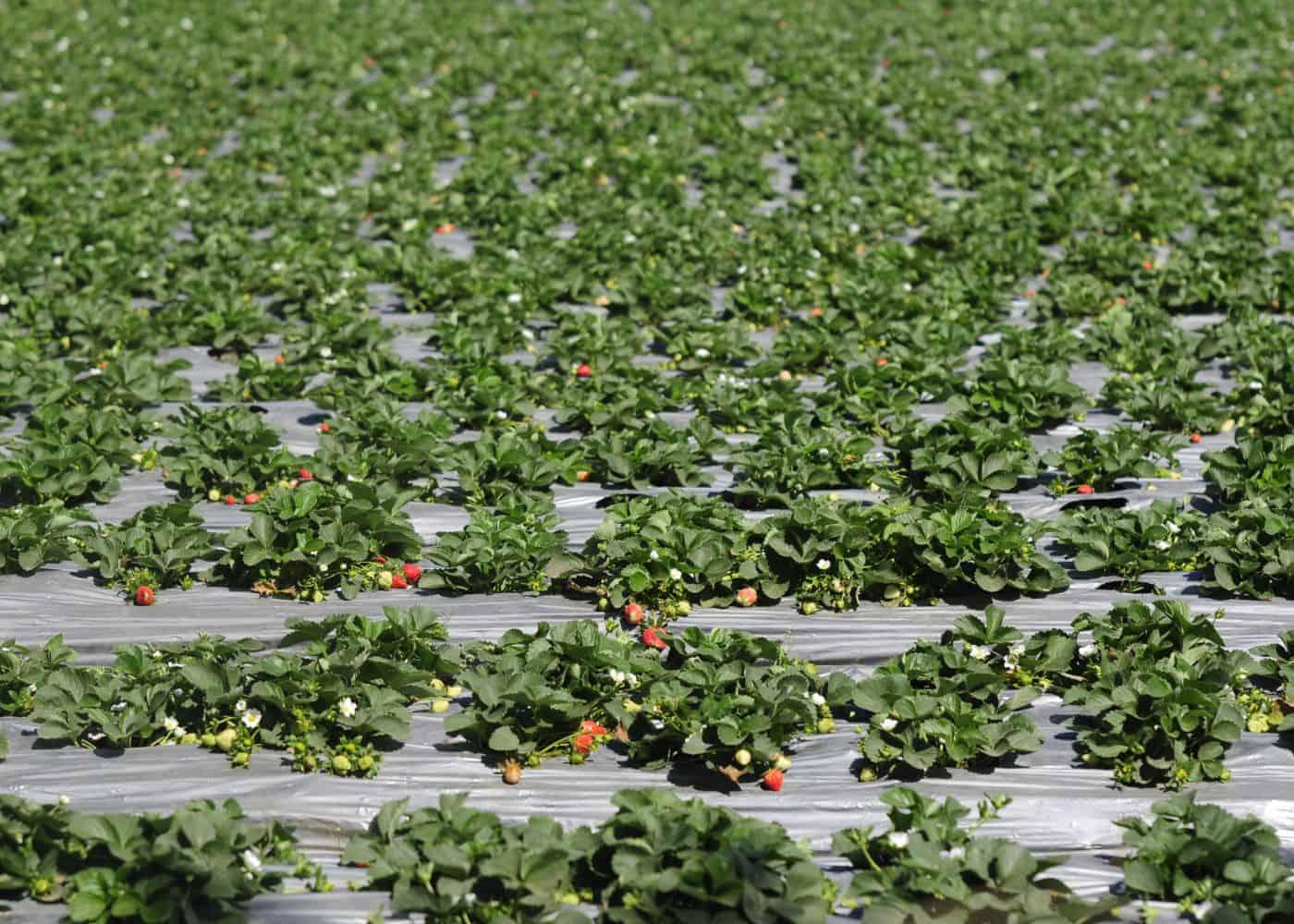
Care tips for hill system strawberries
Strawberries need to be watered regularly, especially during dry spells. Aim for 1-2 inches of water per week. Water the soil around each plant, not just the leaves and stems. Mulching can help retain moisture in the soil and reduce weeds that compete with your strawberries for nutrients and water.
Fertilize your strawberry plants every 4-6 weeks throughout the growing season using a balanced fertilizer. Follow package instructions carefully when applying fertilizer so you don’t overdo it – too much fertilizer can damage your plants.
Weeds are competition for resources like sunlight, water, and nutrients that your strawberry plants need to thrive. Keep an eye out for weeds sprouting up near your hill system strawberry patch and remove them by hand or use an herbicide if necessary (always follow label directions). A layer of mulch around each plant will also help keep weeds away from your strawberries while helping retain moisture in the soil at the same time.
Aphids, slugs, birds, and deer can all wreak havoc on a strawberry patch. Monitor closely for signs of pest activity such as holes in leaves or discolored fruit and take action quickly if you spot any problems before they get out of control. If needed use insecticides approved specifically for edible crops following all label instructions carefully. Some natural methods like companion planting may also work well to deter pests without resorting to chemicals whenever possible
Proper care and maintenance of your hill system strawberry plants will ensure a successful harvest. Next, we’ll look at how to properly harvest the strawberries from your hill system garden.
Harvesting hill system strawberries
Harvesting hill system strawberries is a simple and rewarding process. When the berries turn red, they are ready to be picked off the plant with your fingers or scissors. It’s important not to pick any green berries as they will not ripen after being harvested. The entire surface area of the berry should be bright red before harvesting for maximum flavor, sweetness, and aroma.
Freshly-picked strawberries can last in the refrigerator for 24 to 48 hours before beginning to spoil. Make sure that you don’t leave them at room temperature too long; this can cause them to go bad quickly. To maximize their shelf life, store them in an airtight container lined with paper towels or newspaper which helps absorb excess moisture and prevent mold growth.
It’s also important to check your strawberry plants regularly during harvest season for signs of disease or pests such as aphids, slugs, earwigs, birds, etc. so that you can take appropriate action if necessary. Additionally, it’s helpful to remove any dead leaves from around the base of each plant as these could harbor diseases or attract pests that may damage your crop further down the line.
Finally, make sure you always wear gloves when harvesting hill system strawberries – this will help protect both yourself and your fruit from dirt and bacteria. With proper care and attention throughout its growing season – including regular watering and fertilizing – a hill system strawberry patch should provide delicious fruits year after year.
Annual maintenance for hill systems
When it comes to annual maintenance for hill systems, there are a few key things to keep in mind. Strawberries are perennials, so you can certainly keep them fruiting for a few years, but commercial growers generally replace day-neutral plants each year due to the maintenance requirements and declining production of aging plants.
First, you’ll want to make sure that the soil is well-drained and amended with organic matter such as compost or aged manure. This will help ensure that your plants have access to the nutrients they need for healthy growth and fruit production. Additionally, you should be sure to water your strawberry plants regularly throughout the growing season.
Second, you’ll want to remove any weeds from around your strawberry beds so they don’t compete with your plants for resources like sunlight and water. Hand weeding is often best since it won’t disturb the roots of nearby strawberries or other desirable plants in the garden bed.
Third, if possible, try mulching around each plant with straw or wood chips which can help retain moisture and prevent weed growth while also providing additional insulation during cold weather months when temperatures drop below freezing.
Fourth, prune off any runners (or stolons) that form on established day-neutral varieties, as these can lead to overcrowding in small spaces over time resulting in reduced yields of smaller fruits due to competition between neighboring plants for resources like light and nutrients. Pruning back excess foliage can also help increase air circulation within dense patches of strawberry leaves which helps reduce disease pressure from fungal pathogens such as gray mold (Botrytis cinerea).
Regular annual maintenance of your hill system strawberry plants is essential for ensuring a healthy, productive crop. With the right care and attention, you can enjoy the many benefits of planting with a hill system.
Benefits of hill system planting
Hill system planting is a great way to maximize your garden space and get the most out of your strawberry plants. Another major benefit of hill system planting is improved air circulation. By spacing the plants further apart in individual hills, there’s more room for air to flow between them, which helps reduce humidity and prevents diseases from spreading quickly throughout the entire crop.
Additionally, because each plant has its own mound or hill, they have better access to sunlight than if they were planted in rows on flat ground. This allows them to grow healthier and stronger than those grown in traditional methods.
Water drainage is much more efficient with hill system planting since all excess moisture will run off down the sides rather than pooling at the base where it could cause root rot or fungal issues if left unchecked over time. This makes watering easier since you don’t need to worry about overwatering certain areas; instead give each mound enough water until runoff begins then move on to another section until finished with all mounds evenly watered throughout your garden plot.
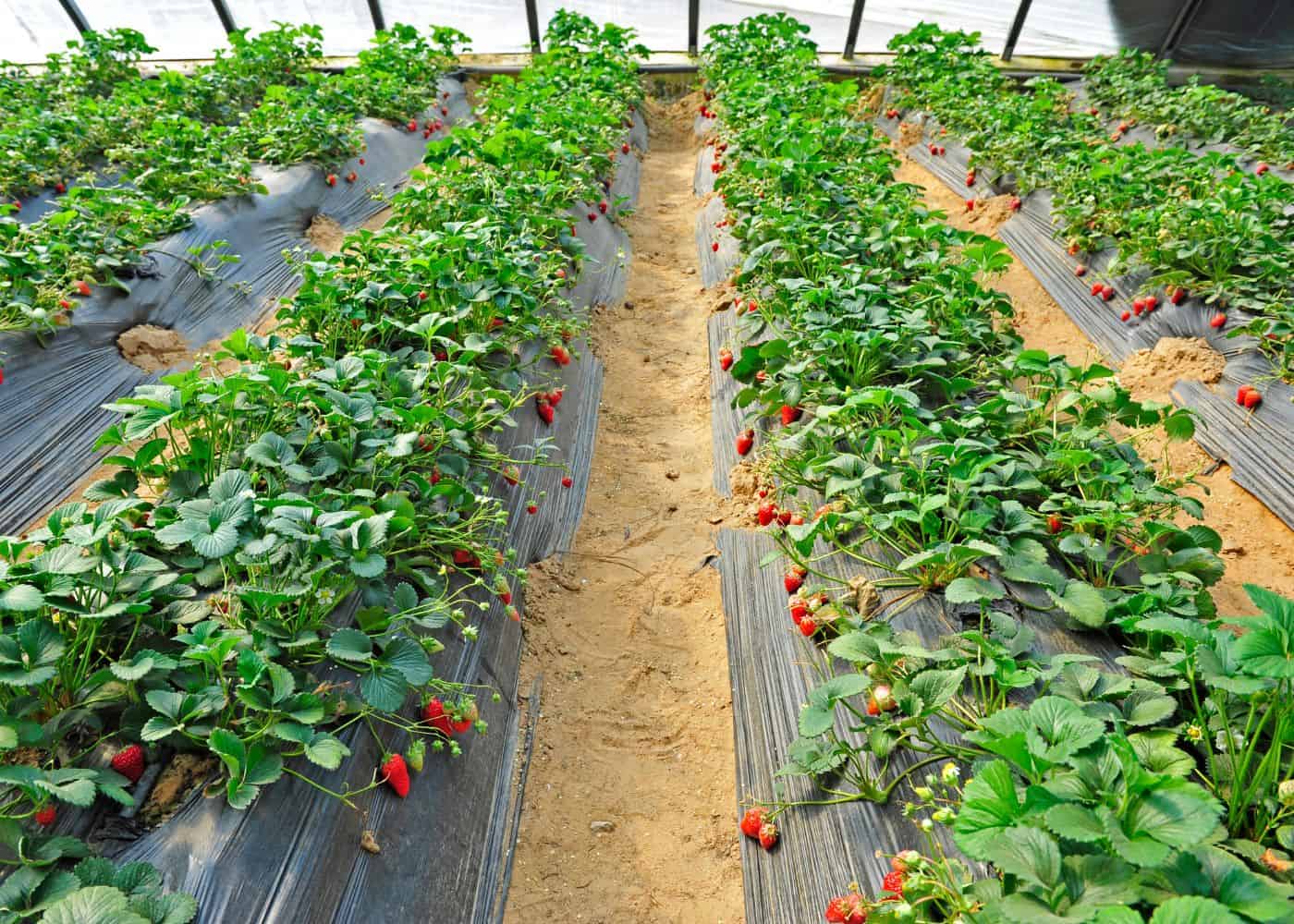
FAQs about hill system strawberries
Why are strawberries planted in mounds?
Strawberries are often planted in mounds for several reasons. Firstly, it helps with drainage by allowing excess water to run off the mound and away from the plant’s roots. Secondly, planting strawberries in mounds allows more air circulation around the plants which can help reduce disease pressure. Finally, when grown in a mound shape, strawberry plants tend to produce larger and healthier fruits due to increased sunlight exposure on all sides of each berry. Planting strawberries in mounds is a great way to ensure healthier and more abundant fruit production.
Can you grow strawberries on a hillside?
Yes, you can grow strawberries on a hillside. Strawberries are one of the most versatile fruits and can be grown in many different environments. When growing them on a hillside, make sure to use soil that is well-draining and not too compacted. Planting your strawberry plants at an angle will help keep the roots from getting waterlogged. Additionally, adding mulch around the base of each plant will help retain moisture and protect against weeds. With proper care and maintenance, you should have success growing strawberries on a hillside.
Before you go…
With careful planting, regular maintenance, and harvesting, you can enjoy delicious fruit for years to come. The hill system allows for easy access to all plants in the bed and encourages strong root development, which leads to healthier plants and bigger yields. So if you’re looking for an efficient way to grow strawberries, consider using a hill system – it’s sure to be worth your while.


